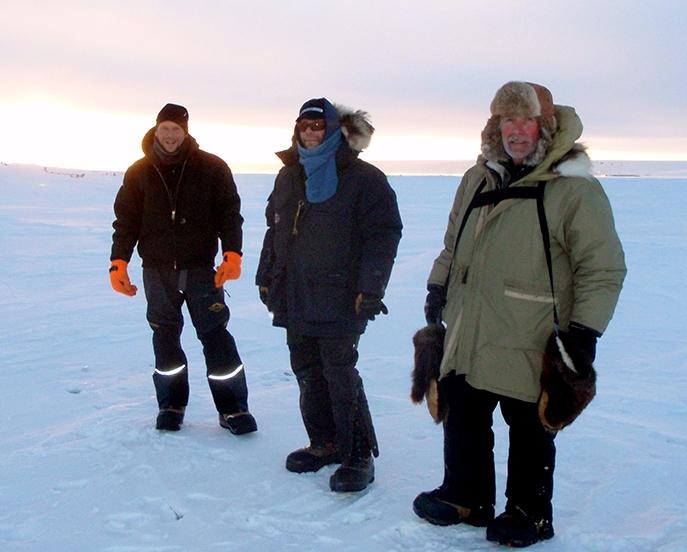
Tim Oakley may by now finally have caught up on sleep lost during a monthlong expedition through northern Yukon Territory and Alaska, when he retraced the route taken more than a century ago by legendary Norwegian explorer Roald Amundsen.
He’s now working on a report of his journey for the Royal Geographical Society.
“We’ve been asked to write a paper showing comparative data on how it was for Roald Amundsen, in 1905 and what we experienced,” he said.
Oakley is a geographical society fellow, and he says his report will outline observations of many changes that’s occurred since Amundsen’s journey through the same stretch of wilderness Oakley’s three-man team traveled through on their grueling journey by dogsled from Herschel Island to Eagle, Alaska. Those changes include the disappearance of trails along the route – and the Native people who used them.
“Back in 1905,” he said, “all the Inuit and the Athabaskans were nomadic – trading and moving about and leading their traditional ways of life. Whereas today, now they all live in villages.”
Oakley says he thinks that reflects a change in the relationship between the Inuvialuit people and the land on which they’ve lived for thousands of years.
But Mike Koskey, an assistant indigenous-studies professor with UAF’s Center for Cross-Cultural Studies, says he think that’s a bit of an overstatement.
“The culture is not lost; the culture has changed,” he said. “Just as ours isn’t the same culture that our forefathers lived in, let’s say, the 17th century.”
Koskey’s spent years studying the indigenous peoples of Northern Alaska and Canada. And he agrees with Oakley’s view that Native people in the region have become less nomadic over the past couple of centuries. But Koskey says Arctic Native peoples’ relationship to the land remains strong, as shown by their continued harvest of food from the land and Arctic Ocean.
“Whether we’re talking about Inuit peoples or Athabaskan Dene peoples, their culture is still very much tied to the land,” he said.
Oakley says he’ll complete his report by September. And meanwhile, he plans to talk with students in the U.K., Norway and elsewhere about his journey.
